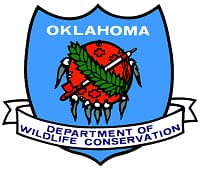Oklahoma 2013 Quail Season Boasts Positive Early Reports

Quail season has not been open very long, but early reports from the field indicate that conditions have improved over the previous two years that were stricken by record heat and drought.
According to Scott Cox, upland game bird biologist for the Oklahoma Department of Wildlife Conservation, hunting has been reportedly good in certain areas, even amid what he believes were poor to fair scenting conditions for bird dogs.
“Coveys were found, covey sizes were good, age structure was good, birds were healthy, crops were full of good forbs,” Cox said.
Hunters were even reportedly harvesting birds as young as six weeks old. Birds were also known to be on nests as late as October.
Cox said that it’s been common for groups of hunters to see about four to five coveys each, with covey sizes ranging from about 12-18 birds. He estimates hunters are harvesting about four to five birds each on average.
Some hunters have even had more marked success. Clinton hunter and former Wildlife Commissioner Mart Tisdal was optimistic earlier in the year after hearing more quail calls than expected while out horseback riding. Then when he hunted opening weekend in northwest Oklahoma, his party moved six coveys, including one group with as many as 30 or more birds.
“We were surprised and happy,” Tisdal said, admitting that while the birds are there, the successful hunter may still have to put in some effort and some walking to find them.
Cheyenne attorney and lifelong Rogers Mills Co. resident Tom Goodwin said opening weekend was too warm for his tastes to be considered ideal quail hunting conditions, but he still hunted because he has every year for the past 50 years. But as it turned out, he had good luck.
“I hunted maybe about three hours,” he said. “I found seven coveys of birds.”
One of those coveys was much larger than normal, he said. Goodwin owns about 1,000 acres in Rogers Mills County that he tries to manage to the benefit of bobwhite quail.
Hunters on public land saw birds, too. At Sandy Sanders Wildlife Management Area, hunters reportedly moved coveys, and even better success was reported on Hackberry Flat WMA. Biologists and private landowners in western and northwest Oklahoma reported seeing more birds, bigger coveys, and healthy birds, and hunter success was reportedly even better than in southwest Oklahoma. Single work was non-existent across the state, but as the weather cooperates for better dog work, that should pick up.
Still, overall the number of quail hunters out in the field opening weekend was reportedly low. Cox said hunters will likely “come out later in the year when scent conditions are optimal.” The rain or snow forecasted for this weekend should provide for better dog work as well.
On the Wildlife Department’s Facebook page, fan Max Nelson states that he lives in southwest Oklahoma, “and you can tell that the birds have had a better year this year compared to the last couple of years.”
Such has been the sentiment of a number of hunters this season. Deer hunters have also reported seeing and hearing more coveys from deer stands.
As recently reported by the Wildlife Department, a model year in terms of Oklahoma rainfall and milder temperatures during the spring and summer the 2013 statewide quail index has increased 31 percent from last year and is up eight percent from 2011. Since quail tend to be a “boom-and-bust” species – meaning their numbers can fluctuate up and down drastically based on annual weather and habitat conditions – this year is being viewed as an important step toward the next “boom.”
“We’ve always said that quail success depends on weather and habitat and that populations will move up or down in direct correlation with rainfall and mild temperatures,”
said Alan Peoples, chief of wildlife for the Wildlife Department. “This was the best summer we’ve had in seven years in terms of favorable quail conditions. While our birds have been hit hard in recent years with record heat and drought, we got a break this year that brought us greener habitat and mild temperatures.”
The improved quail index – which is determined using roadside surveys conducted by Wildlife Department personnel – supports the idea that reproductive success will be better during years of more rainfall and milder temperatures.
Wildlife Department officials are noting better habitat and weather conditions for quail, observing improved survey results and are hearing positive reports from the field. And while they acknowledge that the range-white struggle of the bobwhite have not simply come to an end – the state is still 78 percent below the 23-year average when it comes to quail count survey results – they are welcoming the relief for a population of birds that truly need it. And they are encouraging hunters to keep heading afield to enjoy the tradition of quail hunting in what is still the best remaining habitat in the nation.

